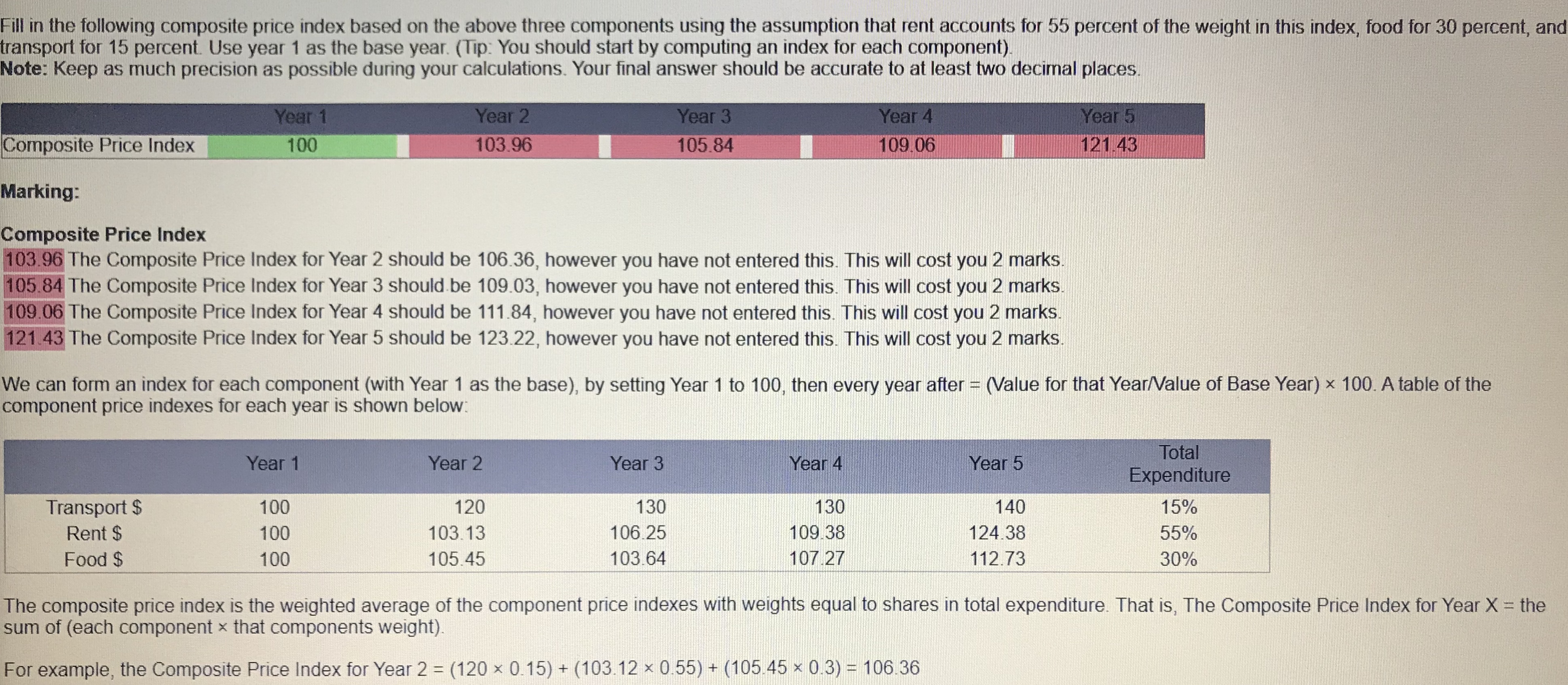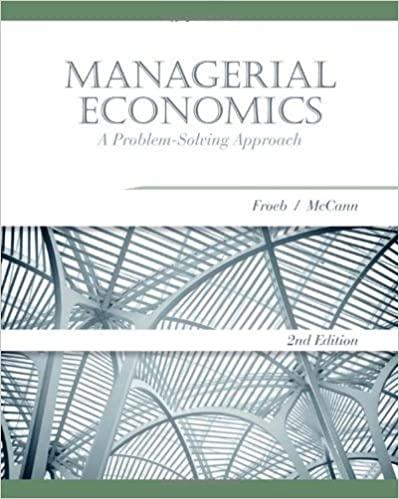Here is the question you need to answer.
Fill in the following composite price index based on the above three components using the assumption that rent accounts for 55 percent of the weight in this index, food for 30 percent, and transport for 15 percent. Use year 1 as the base year. (Tip. You should start by computing an index for each component) Note: Keep as much precision as possible during your calculations. Your final answer should be accurate to at least two decimal places Year 1 Year 2 Year 3 Year 4 Year 5 Composite Price Index 100 103.96 105.84 109.06 121.43 Marking: Composite Price Index 103.96 The Composite Price Index for Year 2 should be 106.36, however you have not entered this. This will cost you 2 marks. 105.84 The Composite Price Index for Year 3 should be 109.03, however you have not entered this. This will cost you 2 marks 109.06 The Composite Price Index for Year 4 should be 111.84, however you have not entered this. This will cost you 2 marks. 121.43 The Composite Price Index for Year 5 should be 123.22, however you have not entered this. This will cost you 2 marks. We can form an index for each component (with Year 1 as the base), by setting Year 1 to 100, then every year after = (Value for that Year/Value of Base Year) x 100. A table of the component price indexes for each year is shown below: Year 1 Year 2 Year 3 Year 4 Year 5 Total Expenditure Transport $ 100 120 130 130 140 15% Rent $ 100 103.13 106.25 109.38 124.38 55% Food $ 100 105.45 103.64 107.27 112.73 30% The composite price index is the weighted average of the component price indexes with weights equal to shares in total expenditure. That is, The Composite Price Index for Year X = the sum of (each component x that components weight). For example, the Composite Price Index for Year 2 = (120 x 0.15) + (103.12 x 0.55) + (105.45 x 0.3) = 106.36Question 1 [10 points] The prices in the following table below are for three components in a typical consumer's budget: transportation, rent, and food. Year 1 Year 2 Year 3 Year 4 Year 5 Transport $ 85 85 95 95 100 Rent $ 900 950 1,000 1,000 1,030 Food $ 550 550 560 600 630 Fill in the following composite price index based on the above three components using the assumption that rent accounts for 55 percent of the weight in this index, food for 35 percent, and transport for 10 percent. Use year 1 as the base year. (Tip: You should start by computing an index for each component) Note: Keep as much precision as possible during your calculations. Your final answer should be accurate to at least two decimal places. Year 1 Year 2 Year 3 Year 4 Year 5 Composite Price Index 0 0 0 0The prices in the following table below are for three components in a typical consumer's budget: transportation, rent, and food. Year 1 Year 2 Year 3 Year 4 Transport $ Year 5 50 60 65 Rent $ 65 800 70 825 850 Food $ 875 550 995 580 570 590 620 Fill in the following composite price index based on the above three components using the assumption that rent accounts for 55 percent of the weight in this index, food for 30 percent, and transport for 15 percent. Use year 1 as the base year. (Tip: You should start by computing an index for each component). Note: Keep as much precision as possible during your calculations. Your final answer should be accurate to at least two decimal places. Year 1 Year 2 Year 3 Year 4 Year 5 Composite Price Index 100 103.96 105.84 109.06 121.43









